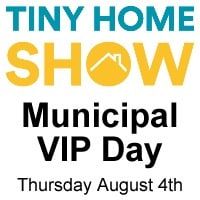Integrated plan
While all levels of government now acknowledge the need for more affordable housing, the expectation appears to be that simply pouring more money into the system will solve the problem. This will not fix the issue! There is plenty of land available in Canada, and there are many municipalities and groups that are willing to provide land for affordable housing, yet we are still in a crisis. Governments are working to reduce red tape as well as developmental fees to accelerate building more affordable housing, but we are not even keeping up with immigration and new demand, let alone addressing the backlog. So what is the solution?
The problem is there are not enough builders, especially high-density builders to get the country ahead of the crisis. Additionally, being able to build homes where they are needed, as they are needed, is another obstacle.
We have developed a plan to build tiny home communities adjacent to host cities and towns across Canada. Communities are planned to be built on a minimum of 100-acres. Each community will begin with 1-neighbourhood consisting of 32-tiny homes on 4-acres. The community will include manufacturing to build more tiny homes, allowing the community to expand by 1-neighbourhood of 32-tiny homes per year, as demand requires. Additionally, the community will include a building division that will expand the infrastructure in the community to accommodate each new neighbourhood. As we open up more communities, adding the ability for the community to expand itself, we feel we will be able to begin to address the affordable housing backlog. The communities will not only expand affordable housing options where they are located, but they will also provide employment for some of the people living in the community.






